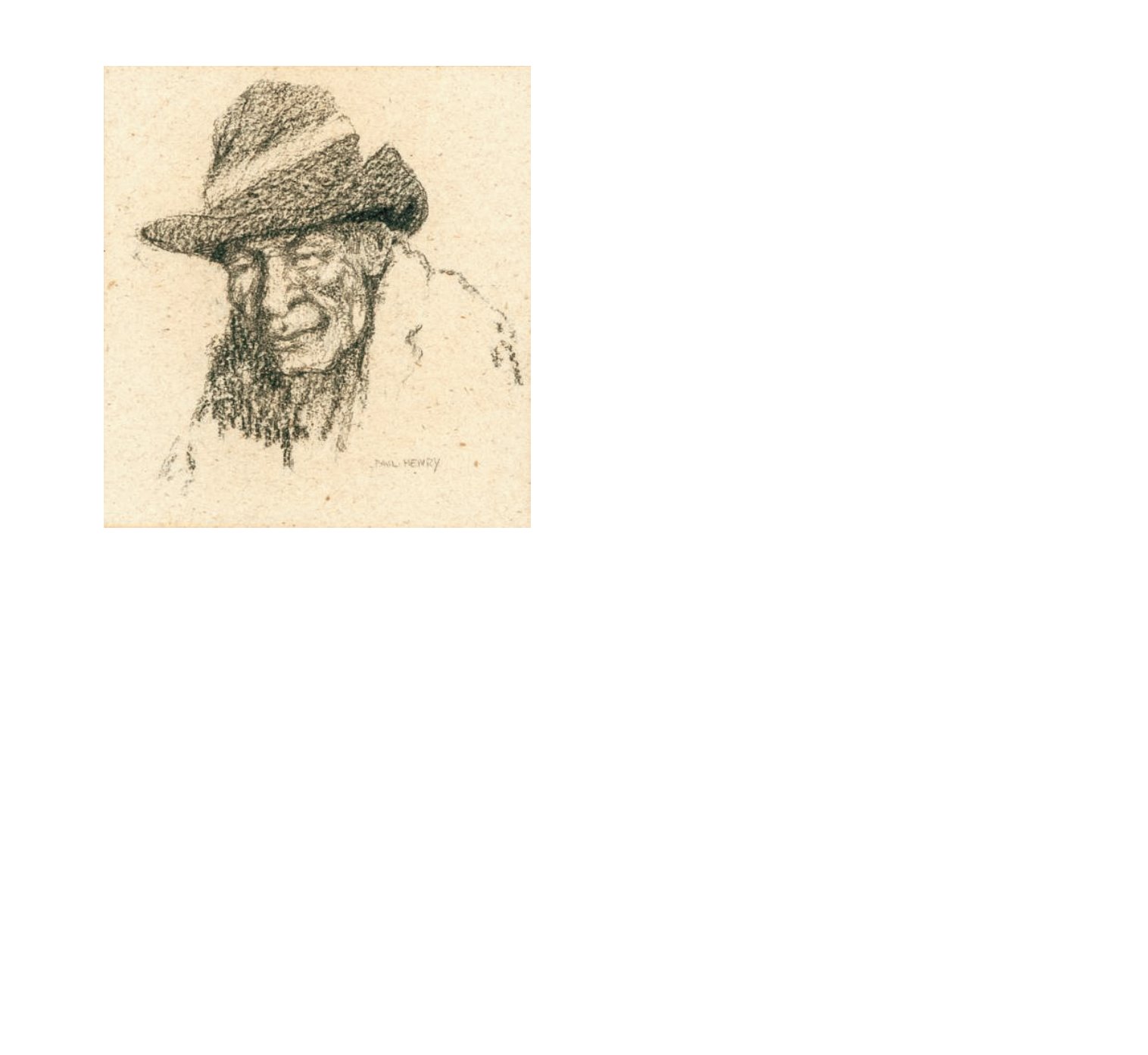
 13.
PAUL HENRY RHA (1876-1958)
Head of an Old Achill Man (1910-13)
13.
PAUL HENRY RHA (1876-1958)
Head of an Old Achill Man (1910-13)
Charcoal on paper, 20 x 18.5cm (8 x 7¼”)
Signed
Provenance: Acquired from The Oriel Gallery, March 1982 by
the current owner
Exhibited: “Pictures of the West of Ireland by Mr. & Mrs. Paul
Henry”, Underwood Typewriter House, Wellington Place, Bel-
fast, 23 March-8 April 1916, Catalogue No.51
Literature: Northern Whig, Belfast, 23 March 1916
S. B. Kennedy, Paul Henry: with a catalogue of the Paintings,
Drawings, Illustrations, New Haven & London, Yale University
Press, 2007, p. 138, catalogue number 210, where erroneously
dated 1915-16.
Reviewing Paul Henry’s 1916 exhibition in Belfast the Northern
Whig (23 March 1916) described this as ‘A fine character study’.
After his arrival on Achill Island in August 1910, Henry made
drawings of the local people as they went about their everyday
business. But getting them to ‘sit’, as here, was not easy, as
he recorded in his autobiography, An Irish Portrait, (1951, p.
52), because he was known pejoratively as ‘the sketcher’. The
expression on the face is especially fine, the features being
carefully delineated, although the drawing was probably done
relatively briskly. The hat worn by the sitter is almost certainly
made from velvet which, Henry tells us, was typical apparel. His
drawing of Tony Patton of Achill (An Irish Portrait, facing p. 85) is
of a similar vein, which confirms the date of this work, as does
the dot in the signature between the words ‘Paul’ and ‘Henry’.
Dr. S.B. Kennedy September 2015
€2,000 - 4,000
14. SEÁN KEATING PRHA HRA HRSA (1889-1977) Study for “An Beinsin Luachra” (The Song of the bunch of rushes)Charcoal and Pastel, 53.2 X 52 cm (21 X 20½”)
Signed
Provenance: Previously in the collection of Louis and Yvonne Jammet of Jammet’s Restaurant
This is a study for “An Beinsin Luachra” which was exhibited in the RHA in 1953. The title comes from an old Irish song which refers to the beauty, honour and virtue
of true love expressed as a meeting between two people. The woman is wearing the traditional Connemara costume and is being courted by a sea faring man, which
might even be an early self-portrait.
Jammet’s restaurant was one of Dublin’s most popular and attracted the international set who mingled with the local well-heeled and theatre and artists types. It was
located at 46 Nassau Street just at the bottom of Grafton Street and was renowned for its fine French dining until it closed in 1967. The Jammet’s supported many local
artists, Yvonne Jammet being an exhibited artist herself, and art adorned the walls of the restaurant adding to its appeal.
€4,000 - 6,000



















